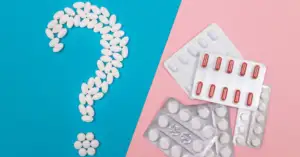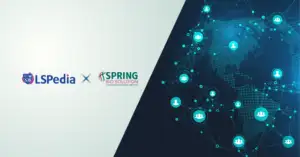Pharmacovigilance, or safety of a drug, involves collecting systematically, evaluation, observing, and avoidance of adverse reactions connected to therapies and medications. The field of pharmacovigilance is purely process-oriented and systematic in nature within the industry of pharmaceuticals. The experience of any unpleasant situation or any reactions arising in the body of a patient in response to a medicine, or due to any process or activity is coined as an adverse event. The term Adverse Drug Reaction (ADR) refers to an adverse event arising because of a drug. In general terminology it is acknowledged as side effects. Side effects can be grouped as mild, moderate and severe. A severe adverse event can be serious and can cause a threat to life, case of hospitalization, inability, perpetual harm, or death in extreme conditions. Every adverse event should be compulsorily reported by investigators of clinical studies, even if only under suspect.
A perfect balance is maintained by pharmacovigilance between the efficacy of a drug and its adverse events. It involves determining which side effects are acceptable considering the potential benefits for patients in treating a disease. For instance, side effects which are severe can be caused by chemotherapy, but such risks are accepted in the pursuit of cancer which causes threat to life due to the seriousness of the disease and uncertain possibilities of remission and cure. Contrariwise, if equivalent side effects are produced by a headache-relieving drug (pain killer), the treatment harm is higher than the benefits of the treatment and would be harmful for the patient. Therefore, the benefit-risk ratio of any therapy as associated with the intended indication, disease prognosis, benefits of the medical intervention and associated risks. Manufacturers of pharmaceuticals attentively monitor the effectiveness and safety of the products hence playing a crucial part in pharmacovigilance. They also safeguard the health of the public and instill confidence in them for their medications and rapidly detect and respond to any adverse reactions.
Trials globally, at the forefront of medical progress, test new treatments worldwide. Trials worldwide are watched over by pharmacovigilance guaranteeing efficacy and safety of medicines. Jointly, trials on a global scale and pharmacovigilance encourage innovation and maintain the well-being of the patients globally.
The subject of pharmacovigilance is vastly categorized into four major sub-areas:
- Operations: This sector is where aspiring drug safety professionals often start their careers. Roles like case processor, drug safety officer/associate, manager, and higher positions are common. They gather data during trials, collect real-world adverse event reports, create SOPs, case reports, and handle regulatory reporting.
- Surveillance: Professionals in surveillance focus on risk management and signal detection, analyzing data collected by their division. Common titles include pharmacovigilance scientist and drug safety physician, with varying levels of seniority. They analyze drug safety information, create development safety update reports (DSURs) for clinical research drugs, and periodic benefit risk evaluation reports (PBRERs) for post-market drugs, aiding in safety and efficacy conclusions.
- Systems: This division focuses on creating and improving a system to house and provide access to extensive safety data. It’s vital for drug safety, adapting to changing regulations and business needs.
- Qualified Person for Pharmacovigilance (QPPV): QPPVs are experts mainly focused on marketed and upcoming drugs. Their broad expertise is utilized beyond pharmacovigilance, advising on EU regulations. These senior roles are strategic and held by experienced professionals, crucial for regulatory compliance.
Pharmacovigilance stands out as a crucial function within a life science company, arguably the most essential of all. During the development, production, and commercialization of a drug, compliance with the regulations is strictly necessary. These regulations primarily focus on patient safety and the benefits the drug brings to patients.
- In fundamental nature, the safety of a drug mandates the well-being and safeguards a patient along the entire drug lifecycle, even drug safety ensures that a patient’s safety and well-being are protected throughout the entire lifecycle of a drug, even after its market availability. Continuous monitoring of drugs for potential side effects on patients is a standard practice, with any new data promptly collected and reported to health authorities. While other departments aim to enhance patient lives in their work, none have as sharp a focus on patient safety as drug safety does.
- This ongoing vigilance means that senior leaders within a drug safety team, alongside others in the company, bear the responsibility and authority to recommend halting a development process or withdrawing an approved drug from the market. EU Qualified Persons Responsible for Pharmacovigilance (QPPVs) play a crucial role in this process, further emphasizing the importance and central position of drug safety.
- Drug safety, in many respects, keeps the gears turning within a pharmaceutical company. Due to its cross-functional nature, the division has significant influence and value to add to other aspects of the business.
Thus, with changes in legislation from Volume 9A to Good Pharmacovigilance Practices (GPV) guidelines, pharmacovigilance has gained a more central role in ensuring patient safety. Importance has been laid on sharing information on safety in details between pharma bodies and CROs, exhibits the substantial impression on the teams of drug safety and the total industry of life sciences. It is of utmost clarity that the significance of pharmacovigilance in the development of novel therapeutics will stay crucial, in alignment with the objective to globally safeguard and boost a patient’s life.





